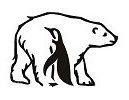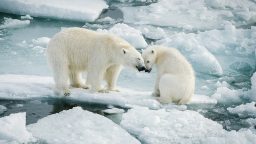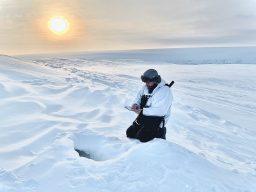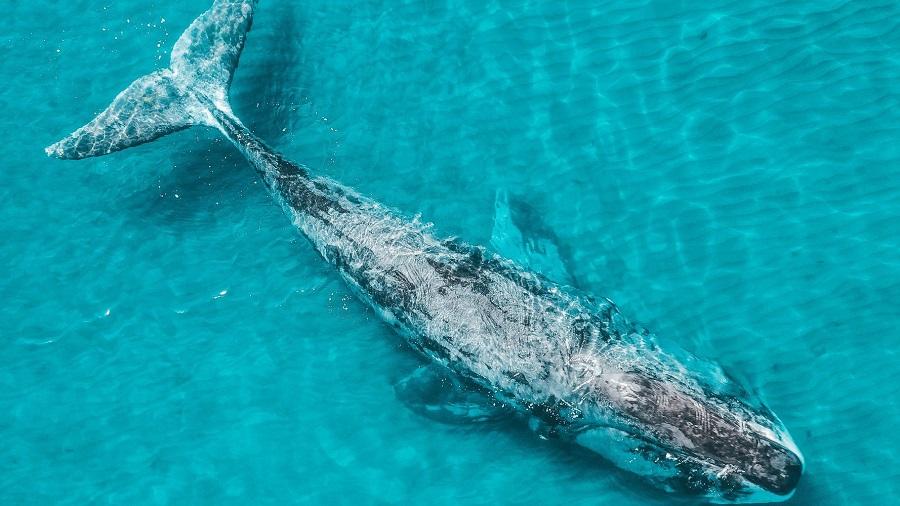
The bowhead whale. Photo: Oleg Palamarchuk / rtraveler.ru
Bowhead and gray whales
When we talk about whales, we first of all imagine the famous giants of the ocean. For example, the blue whale is the largest animal on Earth. Or sperm whales with killer whales – predatory and aggressive toothed hunters. We can also recall the humpback, who became the star of whale watching (whale watching for tourists) in different parts of the world.
Bowhead and gray whales are the only species of baleen whales that enjoy spending their lives in icy polar waters. Some populations of these friendly mammals never leave Russian waters, so the responsibility for their future lies with us. Let’s get to know them better.
Bowhead whales are also called polar whales. They are one of the largest mammals in the world: they can reach a length of 17 meters and weigh about 100 tons! Gray whales are smaller and more elegant – they grow up to 15 meters in length, but they weigh a maximum of 35 tons.
Bowhead whales are seasoned inhabitants of Arctic waters, they travel calmly among the ice, and with their powerful backs they can even break through its thick layer, surfacing. Gray whales are not such big fans of “walrus”: They make long seasonal migrations, traveling from cool waters to warmer waters.
Both bowhead and gray whales belong to the order of baleen whales. But you won’t see any moustaches in the usual sense of the word. The whalebone hides in the whale’s mouth, and with its help it feeds on plankton – tiny crustaceans no more than five millimeters in size. By the way, the bowhead whale is the most mustachioed of all.
It happens like this: the whale opens its mouth and swims forward through the water column. The whalebone, a fringe of horn plates on the animal’s palate, filters tons of water with plankton at this time and leaves nutritious crustaceans in its mouth. Thus, an adult whale can eat up to two tons of plankton per day. About 300 whisker plates over four meters long hang from each side of his jaw.
Bowhead whales are long-lived record holders. Previously, scientists believed that bowhead whales live for 60-70 years, like other species of these marine mammals. But since the shale and jade spearheads that were used in the 19th century were discovered in newly killed whales in the 1990s and 2007, researchers have come to believe that these whales are capable of living much longer.
The theory was confirmed in May 2007: then a bowhead whale was caught off the coast of Alaska with a part of a harpoon in its neck, which was made in 1890. It turns out that the animal was able to survive the whaling that took place more than a century ago! According to the latest data, some individuals of bowhead whales can live up to 268 years.
Different whale populations
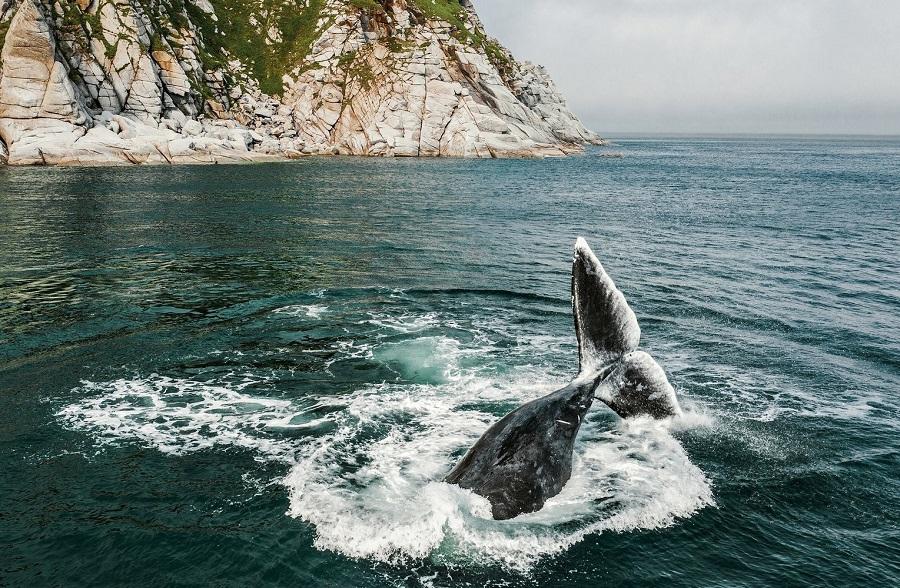
A bowhead whale beats its tail on the water. Photo: Mikhail Korostelev / rtraveler.ru
In Russia, there are several populations of these red book whales that choose different habitats for themselves. The gray whale has Okhotsk and Chukchi-California populations, and the Bowhead whale has Okhotsk, Barents Sea and Bering–Chukchi populations.
Almost all of these whales can arrange long-distance migrations and swim into our waters only from time to time. But there is also a unique exception – the hunting sea population of bowhead whales. The southernmost and smallest population of bowhead whales in Russia is Okhotsk. These whales live in the waters of the Sea of Okhotsk. They are isolated from other populations and do not migrate, that is, they never leave Russian waters.
This population previously numbered more than four thousand bowhead whales, but now this figure has decreased to 300-400 individuals. It’s all the fault of the ruthless and very active whaling in the habitat of polar whales over the past two centuries. Whalers even called the Greenlanders the right whale – “the right whale” – for the incredible amount of fat (and a thick layer of fat is necessary for these giants not to freeze in cold waters).
Currently, hunting bowhead whales of the hunting sea population is prohibited, but this is not the only threat that leads to a reduction in the number of polar giants.
For example, animals are not immune from accidentally falling into drift-net fishing nets.
And these whales are very sensitive to oil spills, because the oil film destroys their food base – plankton. When oil enters the whale’s body, it causes gastrointestinal bleeding, kidney failure, liver intoxication, and blood pressure disorders. Vapors from oil vapors lead to respiratory damage.
Whales are also sensitive to any changes in climate and ecological balance in the Arctic. Therefore, they are considered one of the most important indicators of the state of fragile Arctic ecosystems – and scientists face an urgent need to monitor in order to know how marine mammals feel.
In Russia, bowhead whales and gray whales can be seen in Wrangel Bay in the Sea of Okhotsk, in the area of the Shantar Islands – they have the status of a national park along with the adjacent water area. Here you can admire whales from July to August, sometimes they can be seen in May. And in some seas, surveillance is available almost all year round — until November.
How do biologists distinguish one whale from another?
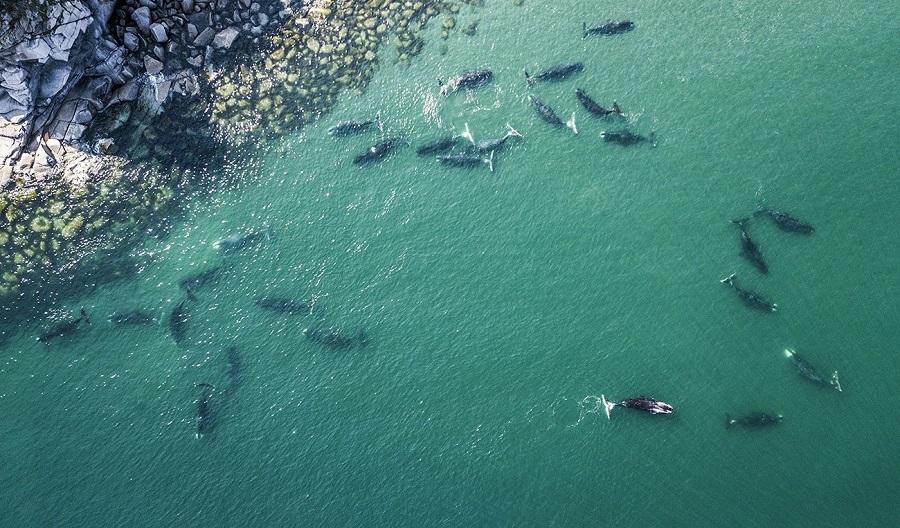
Bowhead whales in the Sea of Okhotsk. Photo: Mikhail Korostelev / rtraveler.ru
Whales are distinguished by: scars and skin pigmentation features (like our fingerprints); by voice – each whale has its own unique song; by fins – each whale has slightly different shapes.
The opportunity to see the polar giants with their own eyes, sighing noisily, singing their underwater songs and loudly clapping their powerful tails on the reins, is truly priceless. Just think: in a small bay near Cape Wrangel, you can admire whales at any time of the day – they draw circles on the water just a dozen meters from the shore.
In any human contact with wildlife (especially when it comes to ecotourism), it is important to make this touch as soft, gentle and inconspicuous as possible. To do this, scientists have created a list of instructions for “communicating” with whales based on previous research.
The most patient and understanding tourists are rewarded with unforgettable impressions: at some point, whales begin to surface and start fountains very close to the boat, or they can swim right under it, lift their heads above the water, show their pectoral fins or slap their tail on the sea surface. When feeding, the whales turn on their side so that you can see the fringe of whalebone in their mouths.
Animals can also be observed from the shore, and also from a drone. If the water is clear enough, it will be possible to consider bowhead and gray whales entirely – and follow how they scratch against sea boulders, trying to shed as soon as possible, how the whole flock “filters” plankton, plays with each other and soars in the water, lazily moving their fins, as if in zero gravity.
The key to success is to be patient, attentive and remember that this person is a guest here, and whales are rightful owners.
By Anastasia Krutikova
More amazing facts about the Arctic can be read here.
